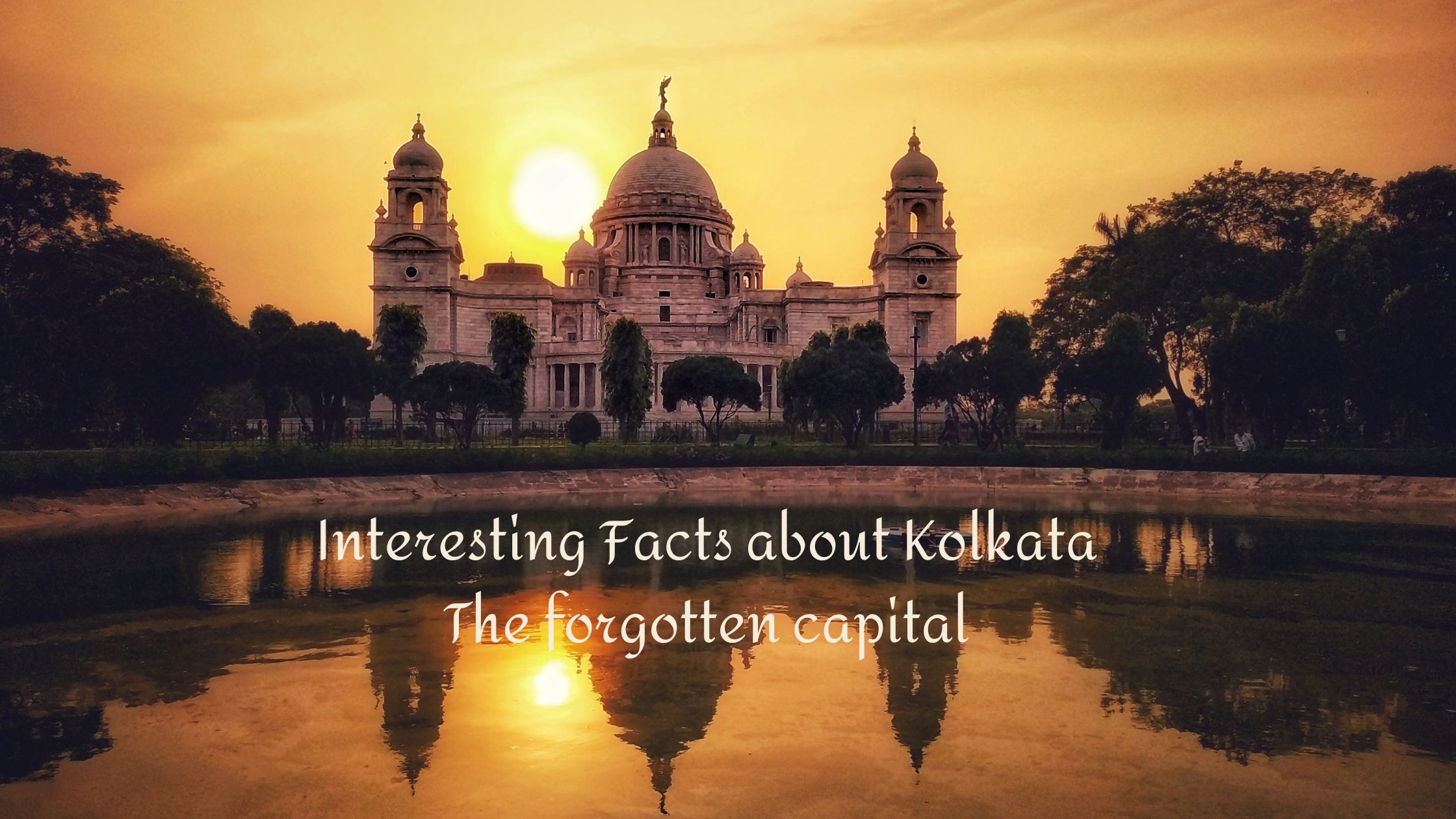Interesting Facts about Kolkata The forgotten capital
- September 28, 2023
- Culture and Entertainment
Bengalis have always believed Kolkata to be one of the best cities in the world. It is, after all, home to Nobel prize winners, mathematicians and scientists, movie directors, writers, and artists. Kolkata is the perfect amalgamation of old-world charm and modern India. Every nook and corner of this city is filled with stories that are bound to mesmerize and charm you! It has something for everyone. From art and literature to sports, food, shopping, history, architecture, religion, spiritualism and even politics. You name it and they have it all. You will enjoy reading these interesting facts about Kolkata the forgotten capital.
What’s in a name?
The history of Kolkata as a British settlement, known to the British as Calcutta, dates from the establishment of a trading post thereby Job Charnock. Kolkata previously known as Calcutta did not become the capital of British India until 1772, when the first governor-general, Warren Hastings, transferred all important offices to the city from Murshidabad, the provincial Mughal capital. In 1773 Bombay (now Mumbai) and Madras (now Chennai) became subordinate to the government at Fort William. A supreme court administering English law began to exercise original jurisdiction over the city.
How the name travels from Kalikata to Kolkata
It is believed that Kalikata was the ancient name of the city and was derived from the Bengali word ‘Kalikshetra’, which means “Ground of Goddess Kali.” There is also a belief that the city derives its name from the location of its original settlement on the bank of a canal (khal). The British gave the city, the name Calcutta, which is an anglicized version of the Bengali name Kalikata. In the early 2000s, the Indian government renamed Calcutta to Kolkata.
Knowing the rich culture of the city
Owing to its expansive history and rich traditions, Kolkata has become the cultural and intellectual capital of India. Bengalis love to embrace poetry, music, theatre, film, and art. There are many art galleries, museums, heritage buildings and movies and musical productions in Kolkata. Durga Puja is the most extravagant religious celebration in the city when streets turn into dazzling kaleidoscopes and men and women immerse in the colours of Vermillion. Millions of lamps are lit on the streets, and vast and colourful clay statues of the goddess Durga are displayed in open pavilions called pandals.
Listen to the stories that these buildings narrate
the buildings also have their own story to tell. Due to its excellent architecture and brilliant work of art, Kolkata was famous for these buildings. At the beginning of the 19th Century though, when the time of the “Babu Samaj ” started to fade. Revolutionary movements were flourishing in Kolkata, causing the British to take away its status as a capital city. Trade was severely impacted. The mansions deteriorated as newer generations struggled to keep up with their astronomical costs.
Kolkata today, is filled with contemporary architecture and infrastructure, which stand in juxtaposition with the colonial and post-colonial architecture, which are a symbolic reminiscence of a long-gone era. As the city grapples with a lot of modern urban infrastructural strain, modernization has trampled on the architectural legacies of not only the British but also the post-colonial common Bengali populace.
How the Chaplin cinema was found and where is it now?
One such old and regal building that had stood the trials and tribulations of time up until 2013 was Chaplin Cinema, the oldest single-screen movie theatre in India. It was located near Chowringhee Place. Legend says that the father of arguably the greatest Bengali actor, Uttam Kumar, used to run the projector at Chaplin Cinema. It gained mass popularity, especially among the younger generation, who loved watching the glitz and glamour of Hollywood films. The theatre had a small, cosy, and aristocratic ambience. After almost two decades of the theatre’s degradation, the local authorities took over the hall, renovated it, and renamed it ‘Chaplin’.
However, the fate of the hall did not overturn with its new name. It continued to suffer losses at the booking office. The authorities could not come up with any graceful solution to this problem. So, in 2013, they demolished the hall and blotted it out from Kolkata’s history.
Formation of Adi Ganga
The Adi Ganga is one of the significant streams of the Hooghly River across historical trajectories from the pre-colonial to the present times. Though it was properly maintained during the colonial period (due to its important role in riverine ecology), in the post-independence period it turned into a sewer because the water channel was neither restored, nor maintained. A huge amount of silt was deposited when the heavy silt-laden water of the Hooghly River entered the canal, especially during high tides resulting in an increase in the bed level.
The heart-throb of the city – Trams
The Calcutta Tramways Company began in 1880 with horses hauling tramcars on Calcutta’s—as the city was then known—serpentine streets. By the early 90s, the system was powered with electricity and by the mid-90s the network covered a vast area. Calcutta was the first city in Asia to get an electric tram. The service began initially between Esplanade and Kidderpore. Later on, the Kolkata Traffic Police, called for the shutdown of several tram routes in subsequent years to reduce traffic congestion in the city. But do see Trams still running on the streets of Kolkata reminding us of the nostalgia of the past.
Today, Kolkata is a bustling metropolis having underground metro, high-rise buildings, vibrant nightlife and large corporate offices. However, the city still masterfully maintains its status of being the cultural capital of India with numerous mementoes of the city’s Colonial past scattered across the length and breadth of the city.
- How to Go Viral on Pinterest: Secret Tips You Need to Know
- How to Open a Tennis Chain Without Breaking the Clasp
- You’ve heard of Pushpa. Now meet the real town behind it, Chittoor!
- 5 Steps to Be Better Than Competitors in Business and Dominate Your Market
- Proven Methods to Increase TikTok Followers Fast and Easily






